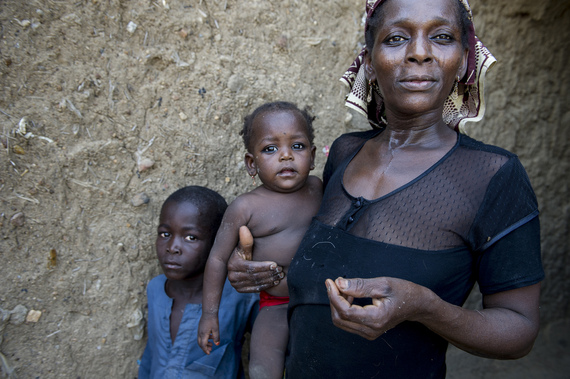Co-authored by Dr. Koki Agarwal, Director, Maternal and Child Survival Program
What countries are most likely to achieve the Sustainable Development Goals?
Even as this set of 15-year objectives--related to health and poverty, climate change and social equity--are pending adoption by the United Nations this month, the global health community is asking this question.
At USAID's flagship Maternal and Child Survival Program, our tireless work to meet the needs of women and families in more than 20 countries gives us keen insight into where the world is headed by 2030. Let's take a moment to look back - at our promises to the world's mothers and children in 2000 - and forward to the realization of our new goals, in 2030, to glean the five things we need to know to make our efforts bear fruit. I: OUR SUCCESS DEPENDS HEAVILY ON REACHING THOSE MOST IN NEED Above: Women and children at home in Dehradun, India, wait for nurses to arrive. (Kate Holt/MCHIP)
Above: Women and children at home in Dehradun, India, wait for nurses to arrive. (Kate Holt/MCHIP)
When we look only at averages across regions and countries, we miss the differences among various socio-economic and ethnic groups, and between rural and urban communities. Today, the danger of dying before age five depends almost entirely on where you are born, and more than half a million women--most of them in developing countries--die yearly from largely preventable complications related to pregnancy or childbirth.
And while global progress to reduce preventable child and maternal deaths has been remarkable over the past two decades, it has also been uneven. At the core of this stalled progress is equity, the ability to reach those most in need with high-quality services. We must reverse the frequent neglect of the poorest and most marginalized, and reach every pregnant woman, delivery and childbirth--as well as newborns and children-- with a minimum package of interventions.
To identify gaps in availability and delivery of services, data -- including epidemiological profiles, coverage data, GIS mapping, and community mapping -- must be integral to our work. But we cannot assume that our efforts will increase equity. We must track performance and take corrective actions where necessary. What gets measured gets done!
Ensuring gender equity here -- outside of the formal health system, in the most remote areas -- is critical to closing the stubborn gaps that remain.
II: FRONTLINE HEALTH WORKERS ARE PARAMOUNT TO IMPROVING HEALTH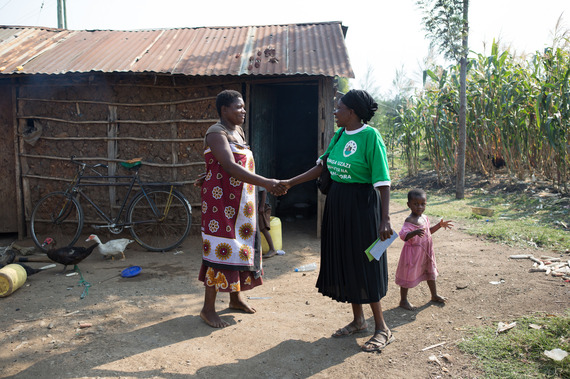 Above: A community health worker visits a mother of 10 children in Kaphodhe slum area, Kenya. (Juozas Cernius/Jhpiego)
Above: A community health worker visits a mother of 10 children in Kaphodhe slum area, Kenya. (Juozas Cernius/Jhpiego)
Consider this: every three seconds, a child's death is prevented in the developing world thanks to a frontline health worker (FHW). They have contributed to the 37% decline in child mortality in the past 20 years, and the 34% decline in maternal mortality between 1990 and 2008.
Yet nearly 21,000 children still die every day from preventable causes, and 1,000 girls and women die each day in pregnancy and childbirth. The great tragedy of these deaths is that most could be prevented with low-tech, inexpensive interventions implemented by an FHW.
Sub-Saharan Africa is a perfect example; the region bears 24% of the world's disease burden, but has only 1.3% of the world's health force. Addressing the global shortage of at least one million FHWs will greatly stem this needless loss of life.
FHWs are not a stop-gap measure in a second-rate health program; they are a permanent part of a highly functional and effective first-class health system. Developing and strengthening community health worker cadres is key to bringing high-quality services to rural populations, adolescents, the very poor, and those facing the highest disease burden.
III: HEALTHY NATIONS BEGIN WITH HEALTHY WOMEN AND FAMILIES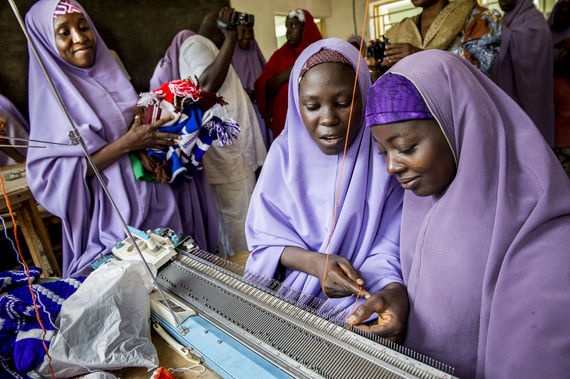 Above: More than 5,500 women belong to Mada Savings Club in Nigeria. Members invest money weekly that can be borrowed and paid back with minimum interest. (Karen Kasmauski/MCSP)
Above: More than 5,500 women belong to Mada Savings Club in Nigeria. Members invest money weekly that can be borrowed and paid back with minimum interest. (Karen Kasmauski/MCSP)
Stakeholders everywhere are realizing what we've always known: supporting women means supporting families, communities and countries.
This positive ripple effect of women's empowerment begins at the household level, where their greater participation in decision making is linked to improved child nutrition. As gender equality increases, so does a woman's capacity to direct resources toward her children and make health decisions on their behalf.
At the community level, mothers' groups further increase women's agency, giving members a better understanding of health while building their financial independence and capacity to take action. Even at the national level, maternal health is linked to a country's health system--so quite literally, improving maternal health benefits all.
Our goals will not be realized without ensuring women's health and their value as both mothers and productive members of the community. When women are enabled to decide how to use resources or access health services, studies show that use of skilled birth attendance increases and maternal and child health outcomes are improved.
IV: COMMUNITY HEALTH IS A CENTRAL COMPONENT OF COUNTRY HEALTH SYSTEMS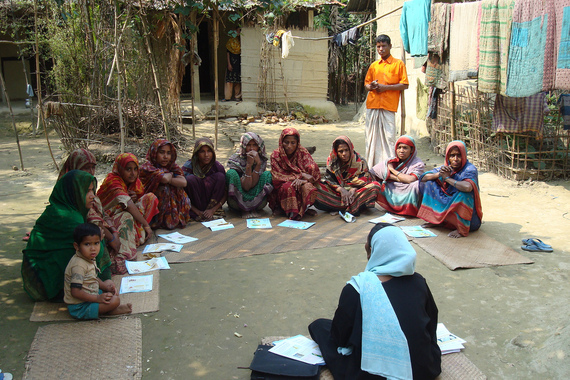 Above: A community meeting in Bangladesh. (Jhpiego)
Above: A community meeting in Bangladesh. (Jhpiego)
Community-based health services are the foundational first tier of the health system. But to be effective, they require support and interaction between community health workers and the larger health system.
Too often, large-scale community health services are delivered by inherently weak health systems. A feedback loop helps to ensure that community-level information is fed through multiple sublevels to the national level, where policy, funding and evaluation can be continually revised.
MCSP takes an expanded view of what a health system is, knowing our efforts must be people centered and community owned. We include not only health services, but all actors involved in protecting and promoting health, and work to link community health with health systems strengthening efforts.
Without adequate coordination, missed opportunities abound to support effective and systematic national strategic plans. Civil society and government partners must be connected to enhance program innovation and solutions for maternal and child health.
V: WE MUST BUILD ON PROVEN INTERVENTIONS AND BE ACCOUNTABLE 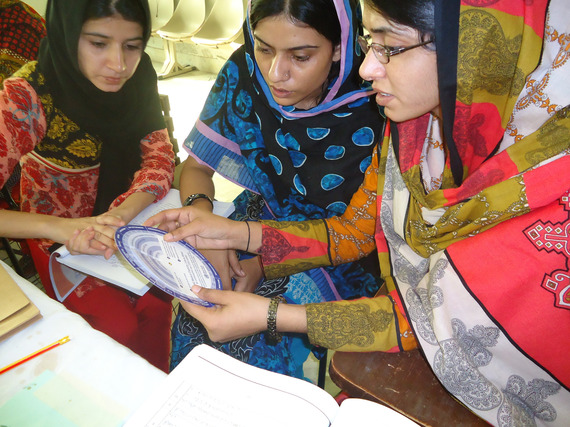 Above: Capacity building of skilled birth attendants in Sindh, Pakistan. (MCHIP/Jhpiego)
Above: Capacity building of skilled birth attendants in Sindh, Pakistan. (MCHIP/Jhpiego)
Do what we know works and scale it up. Seems too obvious? Not always.
As we move forward, the global health community must stay focused on delivering low-cost, evidence-based interventions to every doorstep. Countries will only achieve their goals by attaining effective coverage for high-impact approaches (quality) and reaching those most in need (equity).
Accountability is also a shared responsibility - a process of data analysis, review, and action taking by all partners. This means nongovernmental organizations, civil societies, the community, and private sector working together under national plans. We must remember that establishing indicators is only a starting point. It's every bit as critical to put data to use and empower health care workers with the necessary tools--such as dashboards and scorecards--to help with analysis.
Ultimately, community data has to be integrated to have a comprehensive picture of services and related gaps, and presented in ways that best help decision makers take action. And all of these efforts must be in partnership, as promoting data sharing and use of data by subnational and national stakeholders is essential.
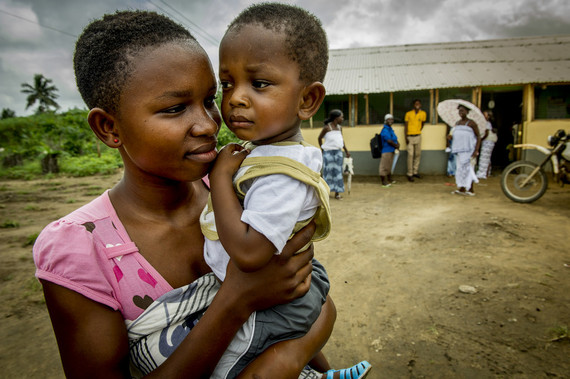 Above: Mother and child in Ghana. (Karen Kasmauski/MCSP)Soon--and for the next 15 years--UN member states will be using the SDGs to guide their agendas. At MCSP, we're heartened that maternal and child health are included in the list of shared priorities. Truly, ending these preventable deaths within a generation is in our grasp.
Above: Mother and child in Ghana. (Karen Kasmauski/MCSP)Soon--and for the next 15 years--UN member states will be using the SDGs to guide their agendas. At MCSP, we're heartened that maternal and child health are included in the list of shared priorities. Truly, ending these preventable deaths within a generation is in our grasp.
As we realize the world we want for our mothers, newborns and children, our eyes must be open to the role investment plays in relation to economic growth and associated reduction in mortality. Declan French wrote of the Millennium Development Goals:
"The most significant factor explaining annual decreases in child mortality over the decade was economic growth. The vast resources mobilized due to this initiative have undoubtedly progressed international development."
We must see the synergies of integrating interventions to achieve the greatest impact. We must look at local contexts to see what is working well, learn those best practices, and scale up efforts in that region.
Communities are crucial in promoting equity, and must be educated and empowered. Through heath volunteers, peer groups, and advisory boards, communities help to ensure that the right people are getting the right services at the right time.
